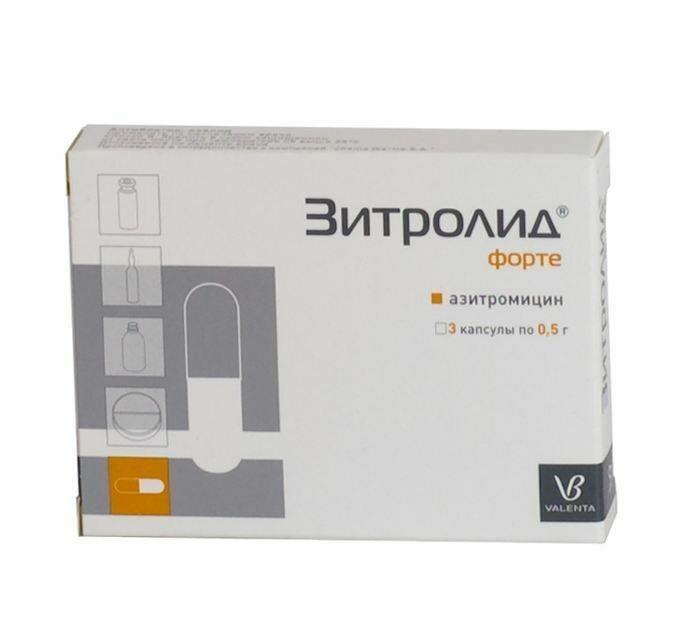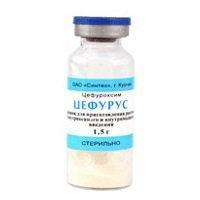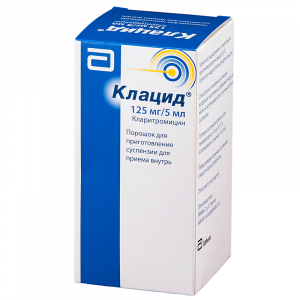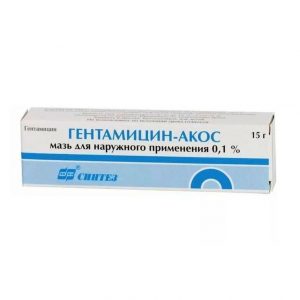Description
Release form
Capsules.
Packing
3 pcs.
Pharmacological action
Zitrolide – an antibiotic of the macrolide group, is a representative of the azalide subgroup. It has a wide range of antimicrobial effects. When creating high concentrations of inflammation in the focus, it has a bactericidal effect.
The drug is active against gram-positive cocci: Streptococcus pneumoniae, Streptococcus pyogenes, Streptococcus agalactiae, streptococci groups C, F and G, Streptococcus viridans, Staphylococcus aureus gram-negative bacteria, Haemophilus influenzaeffrellella pheradeltella pheradeltella refellaella pheradeltaella pheradeltaella pheradeltaella pheradeltaella pheradeltaella straina , Haemophilus ducreyi, Campylobacter jejuni, Neisseria gonorrhoeae, Gardnerella vaginalis of anaerobic microorganisms: Bacteroides bivius, Clostridium perfringens, Peptostreptococcus spp.
Also active in relation to: Chlamydia trachomatis, Mycoplasma pneumoniae, Ureaplasma urealyticum, Treponema pallidum, Borrelia burgdoferi.
Zitrolide is inactive against gram-positive bacteria resistant to erythromycin.
Indications
Infectious and inflammatory diseases caused by drug-sensitive microorganisms:
infections of the upper respiratory tract and ENT organs (tonsillitis, sinusitis, tonsillitis, pharyngitis, otitis media)
scarlet fever of the respiratory tract and lower respiratory tract infections of the lower respiratory tract , bronchitis)
infections of the skin and soft tissues (erysipelas, impetigo, secondary infected dermatoses)
urogenital tract infections (gonorrheal and non-chronic urethritis and / or cervicitis)
Lyme disease (borreliosis), for the treatment of the initial stage (erythema migrans)
disease of the stomach and duodenum associated with Helicobacteryl therapy (combined) .
Contraindications
Hypersensitivity (including to other macrolides) hepatic and / or renal failure lactation period (during treatment is suspended) children under 12 months of age.
Precautions – pregnancy (may be used when the benefits of its use significantly exceed the risk, always existing when using any drug during pregnancy), arrhythmia (ventricular arrhythmias and QT interval prolongation are possible for children with severe impaired liver or kidney function.
Special instructions
A 2-hour break must be observed while antacids are used.
After withdrawal of treatment, hypersensitivity reactions may persist in some patients, which requires specific therapy under the supervision of a physician.
Composition
1 caps. contains the active substance:
azithromycin – 500 mg.
Dosage and administration of
Zitrolide is taken 1 hour before or 2 hours after eating 1 time per day.
Adults with upper and lower respiratory tract infections are prescribed 500 mg / day for 3 days, the course dose is 1.5 g.
For infections of the skin and soft tissues, 1 g is prescribed on the 1st day and 500 mg daily from the 2nd to 5th day (course dose – 3 g).
In acute infections of the genitourinary system (uncomplicated urethritis or cervicitis), 1 g is prescribed once.
In Lyme disease (borreliosis), 1 g is prescribed on the 1st day for treatment of the initial stage (erythema migrans) and 500 mg daily from the 2nd to the 5th day (course dose – 3 g).
In diseases of the stomach and duodenum associated with Helicobacter pylori, the drug is prescribed 1 g / day for 3 days as part of combination therapy.
Children are prescribed Zitrolide at the rate of 10 mg / kg body weight 1 time / day for 3 days or on the 1st day – 10 mg / kg, then for 4 days – 5 mg / kg / day (course dose – 30 mg / kg).
With Lyme disease (borreliosis), children are prescribed a dose of 20 mg / kg on the 1st day and 10 mg / kg from the 2nd to the 5th day.
Side effects of the digestive system: diarrhea (5%), nausea (3%), abdominal pain (3%) 1% or less – dyspepsia, flatulence, vomiting, melena, cholestatic jaundice, increased activity of hepatic transaminases in children – constipation, anorexia, gastritis.
From the cardiovascular system: palpitations, chest pain (1% or less).
From the side of the central nervous system: dizziness, headache, drowsiness in children – headache (during treatment of otitis media), hyperkinesia, anxiety, neurosis, sleep disturbance (1% or less).
From the genitourinary system: vaginal candidiasis, nephritis (1% or less).
Allergic reactions: rash, photosensitivity, Quincke’s edema.
Other: increased fatigue in children – conjunctivitis, pruritus, urticaria.
Drug interactions
Antacids (aluminum and magnesium), ethanol and food slow down and reduce the absorption of azithromycin.
With the simultaneous administration of warfarin and azithromycin (in usual doses), no change in prothrombin time was detected, however, given that the interaction of macrolides and warfarin may increase the anticoagulant effect, patients need careful monitoring of prothrombin time.
When combined with digoxin, the concentration of digoxin increases.
With simultaneous use with ergotamine and dihydroergotamine, their toxic effect is enhanced (vasospasm, dysesthesia).
With simultaneous use with triazolam, clearance decreases and the pharmacological effect of triazolam is enhanced.
Azithromycin slows down and increases the plasma concentration and toxicity of cycloserine, anticoagulants, methylprednisolone, felodipine, as well as preparations suffer from microsomal oxidation (carbamazepine, terfenadine, cyclosporine, hexobarbital, ergot alkaloids, valproate, disopyramide, bromocriptine, phenytoin, oral hypoglycemic xanthine derivatives, including theophylline) due to the inhibition of microsomal oxidation in hepatocytes by azithromycin.
Lincosamines weaken the effectiveness of azithromycin.
Tetracycline and chloramphenicol enhance the effectiveness of azithromycin.
Overdose
Symptoms: severe nausea, temporary hearing loss, vomiting, diarrhea.
Treatment: drug withdrawal, symptomatic therapy.
Storage Conditions
Keep in a dry, dark place away from children, at a temperature not exceeding 25 ° C.
The Expiration of
is 3 years.
active substance
azithromycin
Terms leave through pharmacies
In retseptu
lekarstvennaja form
kapsul
tuberculosis, respiratory infections Otritis, pulmonary infections, pulmonary infections infectious diseases, From pharyngitis, From cystitis, From otitis media, From sinusitis, Bronchitis
Valenta Pharmaceuticals, Russia




